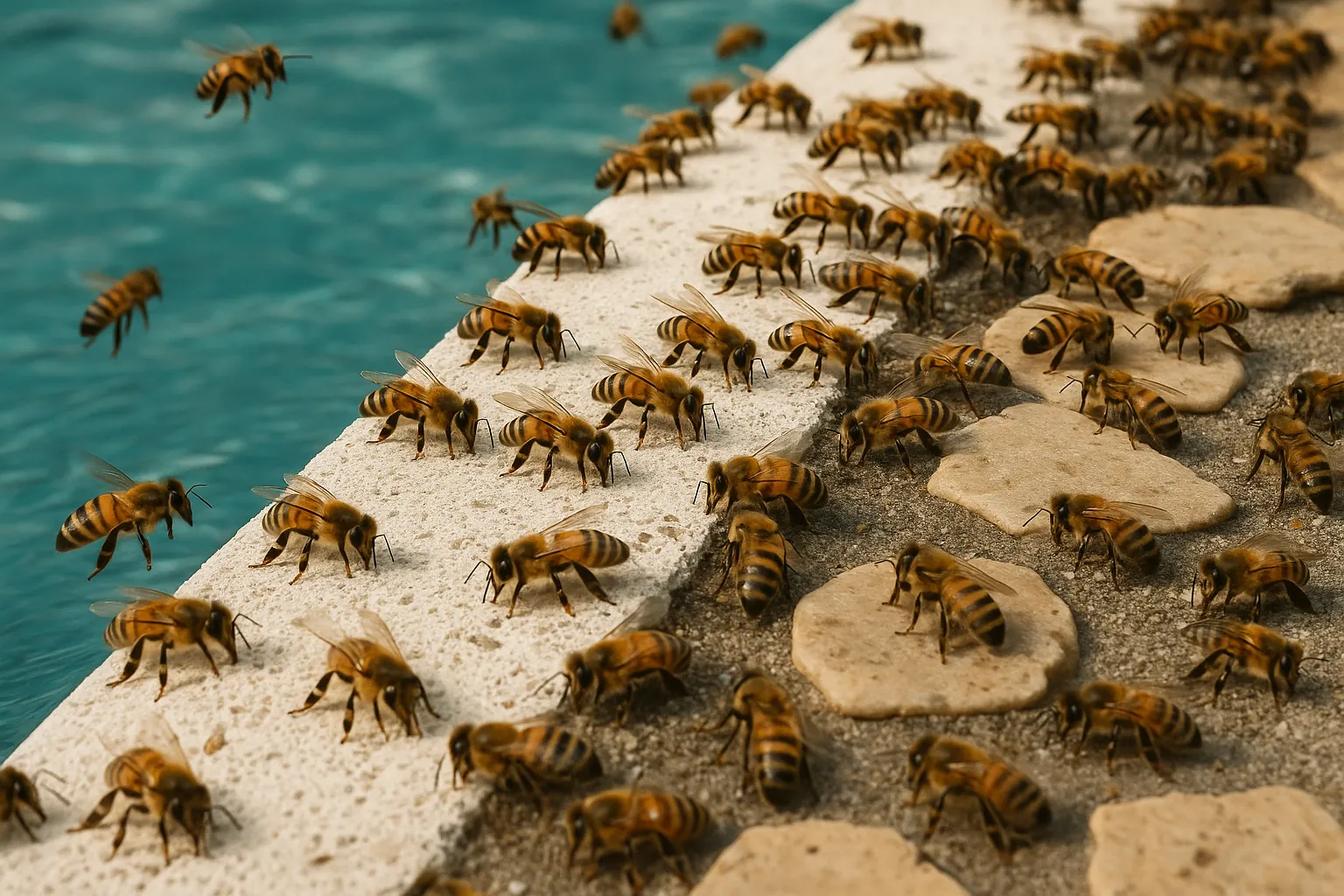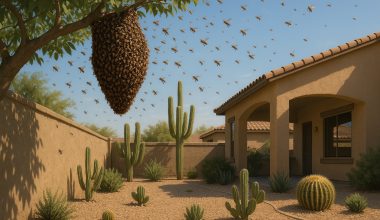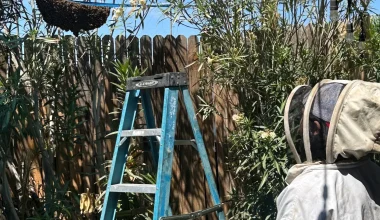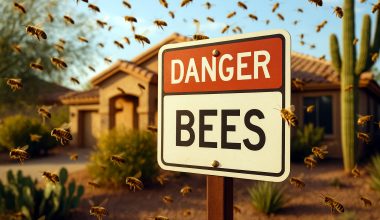As Phoenix heats up, bees start looking for water—fast. Your pool, water features, and A/C condensate line become five-star hydration stations, and suddenly you’re seeing buzzing traffic right where your family relaxes.
The good news? Most of these visitors are just thirsty foragers—and there are humane, simple ways to redirect them. If a colony sets up shop nearby, that’s when you call the pros for live removal.
Why Bees Show Up at Pools and Condensate Lines
- Evaporative cooling: Honey bees haul water back to the hive and fan it across the comb to regulate internal temperature—Phoenix summers make water foraging critical.
- Easy access: Pool coping, waterfalls, and the A/C condensate outlet offer safe landing zones and constant flow.
- Scent memory: Foragers leave odor cues; if one finds your pool, more will follow.
Internal link: If that forager traffic turns into bees exploring your structure, learn what to watch for in Bees in Walls (Phoenix): Signs, Risks & How Pros Remove Them Without Wrecking Your Home.

Are Pool Bees Dangerous? (Africanized Risk vs. Typical Foragers)
Most pool visitors are focused on water—not on people. However, in Arizona many colonies have Africanized genetics, which means a nearby established nest can be more defensive if disturbed.
Red flags it’s more than casual foraging:
- A steady flight path to a single crack, eave, or equipment box.
- Wax flakes or a warm “honey” scent near stucco or block wall voids.
- Persistent activity at sunrise and dusk around the same entrance.
Internal link: For safety guidance during active incidents, see Survive and Prevent Africanized Bee Attacks in Phoenix: Expert Guide.
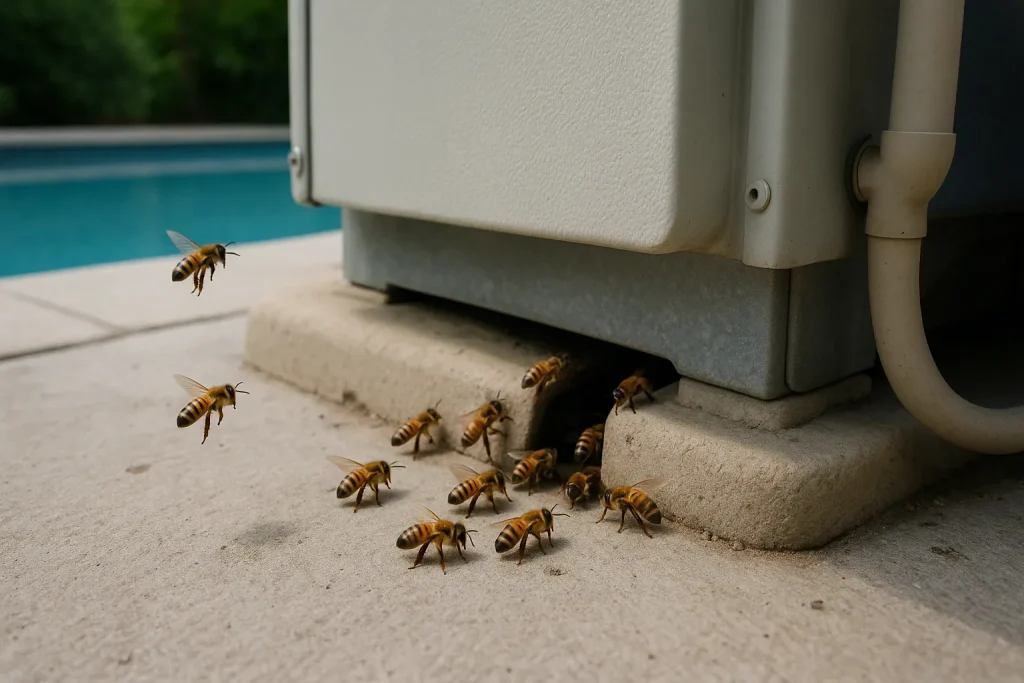
Humane Ways to Deter Bees from Your Pool
Bees are vital—so the goal is redirecting, not harming.
- Offer a decoy water source
- Shallow tray with pebbles/marbles for landing pads; place it along the property edge, away from people and pets.
- Refresh daily so it beats your pool for reliability.
- Time and scent management
- Run waterfalls/fountains at off-peak hours (early morning/evening).
- Rinse sugary spills; avoid strong floral fragrances before backyard time.
- A/C condensate tweaks
- Route the outlet to a gravel splash with a fine mesh cover so bees can’t cluster at the lip.
- If code allows, consider routing into a covered drain instead of open discharge.
Internal link: If a decoy period coincides with a passing swarm in your yard, follow Bee Swarm in Your Yard? What to Do (and Not Do) in Phoenix.
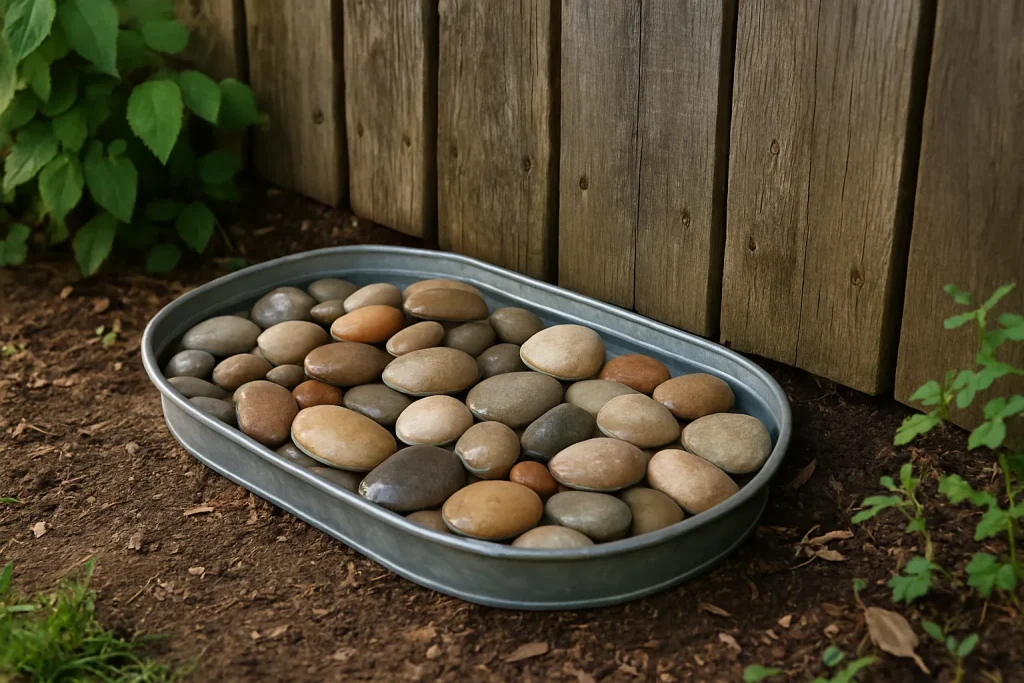
When You Must Call a Pro (and What Live Removal Looks Like)
Call a professional if you notice:
- A defined entrance (eave, block cap, wall void) with continuous traffic.
- Low, steady buzzing behind stucco or inside equipment enclosures.
- Wax, comb debris, or a warm, sweet scent near gaps.
Live removal process (what homeowners can expect):
- Locate & assess with thermal/visual clues and safe access planning.
- Open & remove comb and bees carefully—protecting wiring and finishes.
- Box and relocate bees humanely.
- Clean, mask odors, and seal to prevent re-colonization.
- Repair (stucco/box) as needed so everything looks right again.
• Service explainer: Bee Hive Removal Near Me in Phoenix: What Every Homeowner Needs to Know
• Pricing expectations: How Much Does Bee Removal Cost in Phoenix? (2025 Guide)
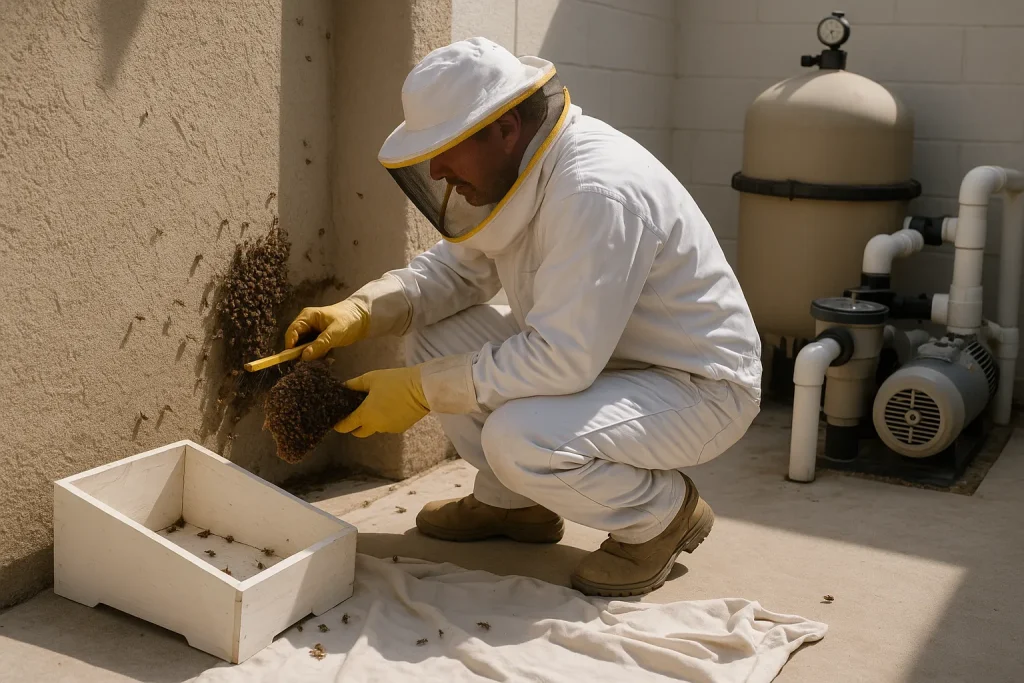
Pools, Pets, and Stings—What Phoenix Families Should Know
- Keep dogs indoors during heavy bee traffic; provide indoor water so they’re not tempted to investigate.
- If stung, scrape the stinger off quickly (don’t pinch), wash area, and monitor for swelling or breathing issues.
Full pet guidance in Are Bee Stings Dangerous for Dogs in Arizona? Signs, First Aid & Removal Tips.
Prevent Colonies Near HVAC & Pool Equipment (Homeowner Checklist)
- Seal conduit penetrations, block fence caps, and gaps in equipment boxes.
- Use ⅛″ hardware cloth on accessible vents/weep holes where appropriate.
- Seasonal inspection: eaves, rooflines, light cans, irrigation valve boxes, pool equipment.
If a nearby colony slips into your structure, read Bees in Walls (Phoenix) for next steps.
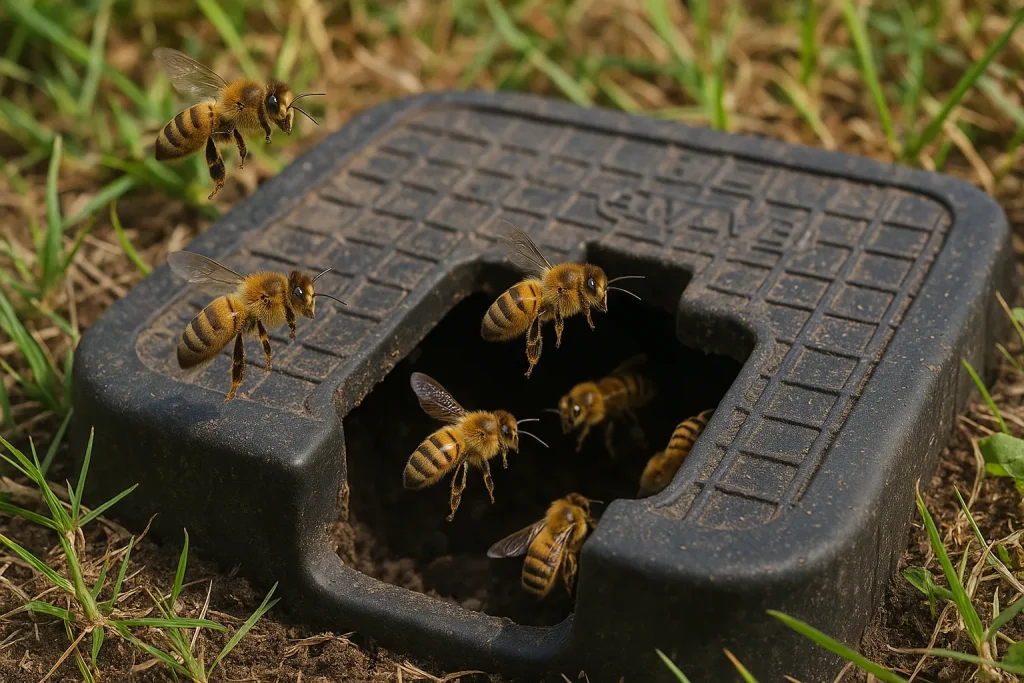
Final Word—Keep Bees Safe, Keep Your Family Safer
Bees visiting your pool or A/C line are usually just thirsty. Give them a better place to drink, tidy up attractants, and they’ll move along. If you see signs of a colony, choose live, ethical removal—fast, safe, professional.
Need help today? Same-day live removal and repairs available—Call Now.
FAQ
Q: Will bees stop coming to my pool if I set up a decoy water source?
A: Usually yes—if the decoy is reliable (always filled) and far from activity areas. Give it a few days for foragers to re-train.
Q: Are bees at my A/C condensate drain dangerous?
A: Foragers are focused on water. But if a colony has nested nearby, defensiveness can increase—look for a single entrance with steady traffic.
Q: Should I kill bees near my pool?
A: No—bees are critical pollinators. Humane deterrence or live removal protects your family and the bees.
